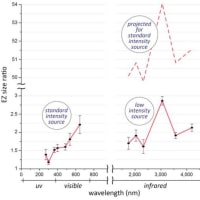Thomas Levy氏の著書に記載されている各種のウイルス・細菌に対するビタミンCの適用の記事の翻訳リストは、次のブログ記事にまとめてあります:
Thomas Levy ビタミンCによる感染症と毒物の治療の本の効果のまとめ
Levy p.118百日咳
Thomas Levy、ビタミンCによる感染症と毒物の治療の本
Curing the Incurable: Vitamin C, Infectious Diseases, and Toxins (英語) ペーパーバック – 2011/8
治癒不可能なものを治す: ビタミンC、感染症疾患、及び毒素
Thomas E. Levy (著)
p.118
Pertussis (Reversible and Preventable; Curable-?) 百日咳 (元に戻せる、予防できる: 治癒可能?)
Pertussis, commonly known as whooping cough, is a bacterial respiratory illness that occurs most commonly and most severely in infants and young children.
Pertussis百日咳は、一般にwhooping coughと呼ばれ、乳児および幼児において最も一般的かつ最も重篤な細菌性呼吸器疾患である。
The common name derives from the Sound of the prolonged, distressed efforts to take a breath that follows repeated coughing.
一般的な名前は、繰り返される咳の後に息をするための長時間の、苦労した努力の音に由来しています。
Even today, pertussis is estimated to cause 500,000 deaths yearly, primarily in infants.
今日でも、百日咳は、主に幼児において、毎年50万人の死亡を引き起こすと推定されている。
(訳注:発展途上国を含む全世界での死者数、先進国の数ではない。
横浜市のサイト
「全世界で、百日咳による死者は、発展途上国を中心に、2001年には年間285,000人(参考文献10)、2002年には年間294,000人(参考文献11)と推計されています。」https://www.city.yokohama.lg.jp/kurashi/kenko-iryo/eiken/kansen-center/shikkan/ha/whoop1.html#:~:text=%E4%B8%96%E7%95%8C%E4%B8%AD%E3%81%AE%E3%80%81%E4%BA%88%E9%98%B2%E6%8E%A5%E7%A8%AE,%E3%81%A8%E6%8E%A8%E8%A8%88%E3%81%95%E3%82%8C%E3%81%A6%E3%81%84%E3%81%BE%E3%81%99%E3%80%82)
(訳注終わり)
Antibiotic treatment of this disease is primarily directed at rendering the patient non-infectious to others.
この疾患の抗生物質治療は、患者を他者に対して非感染性にすることに主に向けられている。
Even when the microbes are eliminated by antibiotics in an infected infant, the remaining course of the illness is typically unaltered.
感染した幼児において抗生物質によって細菌が排除されたとしても、病気の残りの経過は通常は変わらない。
Pertussis is somewhat prolonged, with an incubation stage of one to two weeks characterized by fever, runny nose, and cough.
百日咳は幾分長引き、発熱、鼻水、および咳を特徴とする1〜2週間のインキュベーション段階がある。
The severe phase of the illness, with the frightening episodes of coughing and whooping, lasts another three to four Weeks.
病気の重篤な段階は、咳や百日続く咳の恐ろしいエピソードを伴い、さらに3〜4週間続きます。
The convalescent stage, marked by a slow recovery with a gradually lessened frequency of whooping episodes, can last another four to 12 weeks.
徐々に回復することによって特徴づけられる回復期は、百日咳の頻度が徐々に減少していき、さらに4〜12週間持続する可能性がある。
Following this final stage, for many more months, even a mild, unrelated respiratory infection can induce a return of the characteristic pertussis cough and whoop.
この最終段階の後、さらに数ヶ月間、軽度で無関係の呼吸器感染症でも、特徴的な百日咳の咳の戻りが誘発される可能性がある。
Pertussis is also another disease with an associated toxin even though no traditional antitoxin treatments have been developed for it.
百日咳は、伝統的な抗毒素治療法が開発されていないにもかかわらず、関連する毒素を有する別の疾患でもある。
However, the pertussis toxin is not considered to have the severe, body wide effect of the diphtheria toxin.
しかしながら、百日咳毒素は、ジフテリア毒素のような重度の身体全体の効果を有するとは考えられていない。
Unfortunately, no evidence could be found indicating that Klenner had the opportunity to treat pertussis.
不運なことに、クレナーが百日咳を治療する機会を持ったことを示す証拠は発見できなかった。
Other investigators and clinicians have had some success in treating pertussis with vitamin C, but it has been qualified by the use of significantly smaller doses than would have been used by Klenner.
他の研究者と臨床家は、ビタミンCで百日咳を治療することに成功したが、クレナーが使用した投与量よりは、かなり低い投与量に制限されていた。
However, as should be apparent from the evidence already reviewed, there is no good reason to believe that Klenner-sized doses of vitamin C would not be as effective in the treatment of pertussis as in the treatment of so many other infectious diseases,
しかしながら、既にレビューした証拠により明らかなように、ビタミンCのクレナーの投与量は、多くの他の感染性疾患の治療と同様に、百日咳の治療に有効であると信じる良き理由がある。
訳注: 麻疹の経口投与による治療のように、1時間おきに2gから1gを投与して、それを症状が出なくなった後も3~4日間続ければ良い。
119
Otani (1936) found that pertussis bacteria seemed to be especially susceptible to the effects of vitamin C in the test tube, with a high enough dose having a killing bactericidal effect.
オータニ(1936)は、百日咳菌は、細菌を殺す作用を十分に高い投与量で、試験管の中でビタミンCの作用に特に影響を受けやすいように思われることを発見した。
It was also demonstrated that a culture of pertussis bacteria in which vitamin C had been added possessed a "strongly reduced" infectivity in test animals,
ビタミンCを添加した百日咳菌の培養物は、実験動物への感染性が著しく低下することも示した。
Furthermore, when the vitamin C-treated bacteria were injected by vein into test animals, a lessened white blood cell response resulted.
さらに、ビタミンCで処置した細菌が実験動物の静脈に注射されると、白血球の反応が低下した。
Most likely, this was an indication that the treated bacteria were less infectious and toxic than the untreated bacteria.
これは恐らく、処置した細菌は、未処置の細菌よりも、感染力と毒性が弱いことを示している。
Because of these results, Otani proceeded to use vitamin C in the treatment of children with pertussis,
これらの結果により、オータニは、百日咳の子供の治療にビタミンCを使用した。
Otani's treatment ranged from 50 to 200mg of vitamin C once or twice daily, and total injections ranged from five to 12.
オータニの治療は、ビタミンC 50から200mgを1日に1回から2回投与し、総注射回数は5回から12回の範囲であった。
Otani reported that in 81 patients treated in this fashion, 34 showed a clear improvement of symptoms or "perfect healing," 32 showed a lesser symptom improvement, and 15 showed an "indeterminate" response,
オータニは、このような処置をした81人の患者の中で、34人は症状の明確な改善または完全な治癒を示し、32人は症状の改善が少なく、15人は反応が明瞭ではなかったと報告した。
It appears that Otani got fairly dramatic responses in many pertussis patients with vitamin C doses well below what Klenner would have routinely used.
オータニは、クレナーが日常的に使用する量よりもかなり少ないビタミンCの投与量で、多くの百日咳の患者でかなり劇的な反応を得た。
It would also seem that the neutralizing effect that vitamin C has on pertussis toxin is an additional reason why symptoms responded so well to its administration, since eliminating the bacteria with antibiotics has long been noted not to effect the duration or severity of the clinical illness,
ビタミンCが百日咳の毒素に対して持つ中和作用は、症状がその投与に対して非常に良く反応した理由であると思われる。
抗菌剤による百日咳菌の除去は、臨床症状の期間と重篤度に効果がないと長い間に渡り記録されているからである。
One hypothesis, advanced by Brown (1936), is that the symptoms of pertussis are prolonged because the pertussis toxin becomes bound to the nervous tissue that involves the mucous membranes of the respiratory tract, thereby maintaining a prolonged irritability.
ブラウン(1936)により進展させられた一つの仮説は、百日咳の症状は、呼吸器官の粘膜細胞に関与する神経組織に百日咳毒素が結合して、それにより長引く刺激を維持するために百日咳の症状が長引くというものである。
Otani (1939) later reported on the treatment of 109 pertussis cases.
オータニ(1939)は、109人の百日咳の症例の治療を後に報告した。
He found "some efficiency" to "remarkable efficiency" in over 80% of the patients treated.
彼は、治療した患者の80%以上に、「ある程度の効果」から「著しい効果」を見出した。
Some of the less responsive patients had had additional infections or other medical complications that would be expected to require increased amounts of vitamin C in order to show a good clinical response.
反応の少ない患者の何人かは、良好な臨床反応を示すためにビタミンCの量を増やす必要のある追加の感染または他の医学的合併症を持っていた。
120
Ormerod and Unkauf (1937) also reported on the treatment of pertussis with vitamin C.
オルメロドとウンカウフ(1937)も、ビタミンCによる百日咳の治療を報告した。
They found that vitamin C"definitely shortens" the severest symptoms of pertussis, particularly if relatively "large" doses are used shortly after the first symptoms of the disease appear,
Nine children and one adult were treated.
特に、比較的高投与量をこの疾患の最初の症状の直ぐ後に使用するならば、ビタミンCは、百日咳の最も重篤な症状を確実に短縮することを彼らは見出した。
The oral dosing was somewhat minimal, ranging from 150 to 500mg of vitamin C daily over an eight-day to 15-day period.
経口投与は、幾分少なく、8日から15日間に渡り、ビタミンC 150から500mg/日であった。
備考: この投与量は少なすぎると思う。麻疹の経口治療のように1時間おきに1~2gを毎日続ければ良い。
Woringer and Sala (1928) had earlier reported that in a number of infants seen for pertussis in their clinic, four of them developed scurvy as a result of their infections.
ウォーリンガーとサラ(1928)は、診療所に百日咳で来院した数多くの乳児で、彼らの中の4人が感染により壊血病を起こしたことを報告した。
This is further evidence that the combination of infection and toxicity is an especially effective way to rapidly and completely deplete the body's limited stores of vitamin C.
これは、感染と毒素の組み合わせは、体の限定されたビタミンCの貯蔵を急速に完全に枯渇させるのに特に効果的である証拠である。
It is also an important additional reason to add vitamin C therapy to the treatment of any infectious disease, regardless of cause.
それはまた、原因の如何に関わらず、あらゆる感染疾患の処置にビタミンC治療を追加する重要な追加の理由である。
A recurring theme throughout this book is that infection and stress of any sort will significantly increase the rate at which vitamin C is metabolized and utilized.
この本の繰り返すテーマは、あらゆる種類の感染とストレスは、ビタミンCが代謝され利用される速度を大きく増加させることである。
As a result, unrecognized acute Scurvy is a relatively common complication of many fatal diseases, infectious or otherwise.
その結果、多くの致命的な疾患で、感染性であれ他のものであれ、認識されていない急性の壊血病は、比較的一般的な合併症である。
Ormerod et al. (1937), in following up the earlier work just mentioned, presented their results on the treatment of 17 more cases of pertussis with oral doses of vitamin C.
オルメロド等(1937)は、初期の研究のフォローアップで、ビタミンCの経口投与による百日咳の17例の症例の治療の結果を述べている。
Although they acknowledged the likely superiority of giving vitamin C by vein, they especially wanted to evaluate the oral route since it would provide a less expensive treatment with wider applicability.
ビタミンCの静脈投与が優れていることを彼らは認めているが、幅広い適用性を持つ費用の少ない処置を提供できるので、彼らは特に経口投与を評価したがった。
The oral schedule was a prolonged, tapered regimen.
経口投与治療は、長く、投与量を徐々に減らす投与計画であった。
A 350 mg dose of vitamin C was given on the first day, and on subsequent days 250,250, 200, 200, 150, 150,125,125, and finally 100mg were given.
ビタミンC投与量350mgを初日に投与し、引き続く日には、250, 250, 200, 200, 150, 150, 125, 125, そして最後に100mg投与した。
A 100 mg daily dose was then maintained until there was a "complete remission of symptoms for two days."
症状が2日間完全に消えるまで、1日100mgを維持した。
The average total dose ended up being about 2700 mg.
平均総投与量は約2700mgであった。
This vitamin C treatment protocol was found to "markedly" decrease the intensity, frequency, and length of the characteristic pertussissymptoms,
このビタミンC投与計画は、特徴的な百日咳の症状の強度、頻度、期間を著しく減少させた。
約注: なぜこのような投与量を低下させる治療計画を作ったのか、その根拠が不明。最初から350mgを続ければ良いのではないか。あるいは、あの当時のビタミンC価格が影響しているのか? (訳注終わり)
次の例も、C投与量を次第に減らした治療例
Vermillion and Stafford (1938) reported on the vitamin C treatment of 26 infants and small children with pertussis.
バーミリオンとスタッフォード(1938)は、百日咳の26人の乳児と小児のビタミンCによる治療を報告した。
They appeared to be particularly interested in trying to duplicate the earlier work of Otani, Ormerod, Unkauf, and White, already cited.
彼らは、既に引用したオータニ、オルメロド、ウンカウフ、ホワイトの初期の研究を再現することに特に関心があった。
The first 16 patients were treated with 150 mg of oral vitamin C daily for the first three days.
最初の16人の患者は、最初の3日間に経口投与のビタミンC 150mgで治療した。
Then 120mg daily was given for the next three days, and finally 90 mg daily was given until symptoms entirely subsided.
その後、1日120mgを続く3日間投与した、そして最終的に、症状が完全に消えるまで1日90mgを投与した。
The remaining patients were given comparable but variable oral doses of vitamin C.
残りの感じや葉、それに匹敵するが投与量を変えた経口投与のビタミンCを投与した。
The researchers concluded that vitamin C appeared to be "strikingly effective" in the relief of symptoms in all but two patients,
研究者は、2人の患者を除いて、ビタミンCは、症状の緩和に驚くほど効果的であったように思えると結論づけた。
They further concluded that vitamin C should be given in all cases of pertussis regardless of patient age or the length of time elapsed since the onset of symptoms,
彼らはさらに、ビタミンCは百日咳の全ての症例で、患者の年齢または症状が始まって以来の時間に関わらず投与されるべきであると結論づけた。
Two other researchers who utilized injectable vitamin C in treating infants with pertussis also reported success in controlling the disease symptoms.
百日咳の乳児の治療にビタミンC注射を使用した2人の他の研究者も、この疾患の症状のコントロールに成功したと報告した。
Sessa (1940) reported that injecting 100 to 500mg of vitamin C daily appeared to reduce the convulsive coughing and accelerate the overall rate of recovery.
セッサ(1940)は、1日に100から500mgのビタミンCの注射は、痙攣性の咳を減らし、全般的な回復速度を加速したように思われたと報告した。
Meier (1945), using both injectable and oral doses of vitamin C, found that coughing was reduced with a quicker restoration of appetite and disappearance of vomiting.
マイヤー(1945)は、注射と経口投与のビタミンCの両方を使用して、迅速な食欲の回復と嘔吐の消失を伴って、咳が減少したことを見出した。
The benefit appeared to be especially pronounced in infected infants.
その利益は、感染した乳児で特に顕著であるように思われた。
The evidence clearly supports a beneficial role for vitamin C in the treatment of pertussis,
エビデンスは、百日咳の治療におけるビタミンCの有益な役割を明確に支持している。
Doses probably adequate to achieve a complete and rapid cure, as used routinely by Klenner in other infectious diseases, were not found in the literature for the treatment of pertussis,
他の感染性疾患でクレナーにより日常的に使用されたような完全で急速な治癒をもたらす恐らく適切な投与量は、百日咳の治療の文献には見られなかった。
However, much smaller doses consistently had positive effects in lessening both the intensity and duration of symptoms, and often the duration of the illness was also clearly shortened.
しかし、はるかに少ない量が、症状の強度と期間の両方を低下させる正の効果を一貫して持っていた、そして、病気の期間も明確に短縮した。
The bacteria causing pertussis can be killed in culture by vitamin C, and the effects of the pertussis toxin also appear to be lessened by vitamin C.
百日咳を起こす細菌は、ビタミンCにより培地の中で殺された、そして百日咳毒素の作用も、ビタミンCにより減弱されたように思われた。
Furthermore, scurvy has been shown to be precipitated by pertussis infection.
さらに、壊血病は、百日咳の感染により引き起こされたことが示された。
Vitamin C needs to be administered in pertussis and all infectious diseases, and adequate regular dosing of vitamin C should prevent pertussis from ever being contracted.
ビタミンCは、百日咳と全ての感染疾患で投与される必要がある、そして適切なビタミンCの規則的な投与は、百日咳への罹患を予防するはずである。
It remains to be seen what Klenner-sized doses of vitamin C would do for the acutely infected pertussis patient.
クレナーの投与量のビタミンCが、実際に感染した百日咳患者にどのように作用するかまだ観察されていない。























